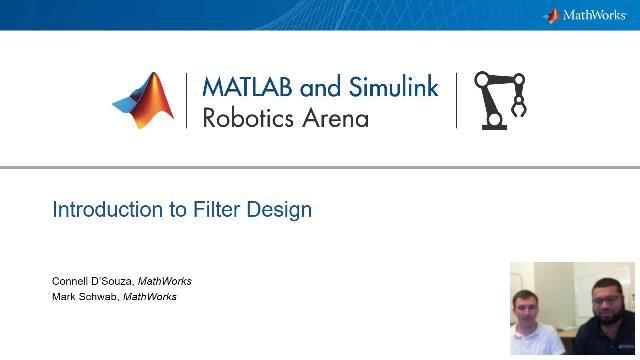What Is Filter Design in MATLAB?
Digital filters are central to almost every signal processing system. Filters eliminate unwanted artifacts from signals to enhance their quality and prepare them for further processing. Digital filters are used in a variety of signal processing tasks including outlier and noise removal, waveform shaping, signal smoothing, and signal recovery.
MATLAB® and DSP System Toolbox™ provide extensive resources for filter design, analysis, and implementation. You can smooth a signal, remove outliers, or use interactive tools such as the Filter Designer tool to design and analyze various FIR and IIR filters. You can also compare filters using the Filter Visualization Tool and design and analyze analog filters using built-in functions.
For implementing filters on embedded hardware, you can convert your filters to fixed point and analyze quantization effects using DSP System Toolbox. You can also implement filters using structures like direct-form FIR, overlap-add FIR, direct-form II with second-order sections, cascade all-pass, and lattice structures. You can generate HDL code from filter designs for deployment onto FPGAs and ASICs.

The filter design library includes hundreds of filters including low-pass, high-pass, and band-pass filters as well as advanced designs such as Kalman, Nyquist, adaptive, multirate, and pulse-shaping filters.
Examples and How To
Software Reference
See also: low-pass filter, high-pass filter, Savitzky-Golay filtering, median filtering, Signal Processing Toolbox, DSP System Toolbox, digital signal processing, data filtering, Nyquist theorem
